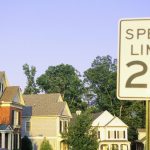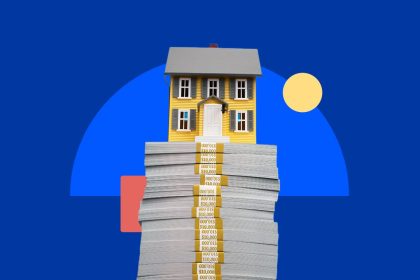Key takeaways
- Borrowers can pay off a HELOC early at any time during the draw period or repayment period.
- Paying off a HELOC is not the same as actually closing a HELOC.
- There are benefits to paying off a HELOC early, but there may also be drawbacks such as prepayment penalties.
- Options for settling a HELOC include repaying and refinancing.
One of the things borrowers enjoy about HELOCs is their timeline: You have a long period during which you can draw funds and, often, an even longer one in which to repay them. But what if you don’t want to take the allotted 10 or 20 years to repay – but would rather settle your debt sooner rather than later? Can you in fact pay off a HELOC early?
Yes, you can. You may choose to pay your HELOC balance down to zero at any time, whether you’re still in the draw period or if you’ve moved into the repayment period. But borrowers should be aware that the process may not be as simple as it appears. A paid-off HELOC is not the same as a closed HELOC, for example. And you may have to pay for the privilege of paying early, too.
Here’s everything you need to know about paying off a HELOC ahead of schedule.
How to pay off a HELOC early
Because HELOCs are revolving lines of credit, how much you choose to borrow at a given time tends to be flexible. The same goes for how much you choose to pay back and when. You may choose to pay off your HELOC for a variety of reasons: Perhaps you’ve used all the funds you know you will need. Perhaps you’d like to get those monthly obligations off your back. Perhaps you’d just like to own your house free and clear again.
You’d think paying it off would be simple. Alas, it’s not. “One of the only things borrowers are never instructed upfront is that closing a HELOC is not as straightforward as writing a final check,” says Matt Schwartz, a Southlake, Tex.-based mortgage broker and co-founder of the VA Loan Network. “Especially if your lender requires a formal payoff request or reconveyance process.”
“I always recommend clients request a written payoff quote, not just the online balance,” Schwartz adds. This payoff amount, as the Consumer Finance Protection Bureau defines it, includes the interest due through the day you actually settle the outstanding sum, plus any other charges or penalties (more on those later). Your payoff amount will likely differ from the remaining balance you owe, as interest can accrue daily, and other fees may apply.
“If you’re in the draw period, watch for accrued interest or fees through the payoff date — these can throw off your final amount,” Schwartz advises. “A staggering number of borrowers overpay or underpay hundreds because they get ‘balance due’ and ‘payoff due’ mixed up.”
The payoff quote will include the exact, final figure needed to satisfy your debt and close out the loan. Once you have the most up-to-date info, you can pay an accurate amount. Ask your lender what forms of payment are accepted – you may need a check or money order, or you may be able to use an ACH transaction or — if you also have a savings or checking account with that lender — a simple funds transfer. Alternatively, if your lender has a brick-and-mortar location near you, you may be able to visit and pay in person.
Paying off vs. closing a HELOC
Paying back all your borrowed funds is not the same as terminating your HELOC, though. The HELOC actually remains open and active – unless you specifically request the lender terminate it. “Most servicers won’t close the credit line automatically, so the lien can stay on your title even when the balance is zero,” Schwartz explains. This means there’s still technically a claim on your home, which could complicate any future loan applications – or selling the place, since all property liens must be settled before the title changes hands.
So, ask your lender for documentation at each step of the HELOC closure process. It should go like this:
- Request your payoff due amount from the lender. This should be provided to you based on the date you plan to pay it off so numbers are exact.
- Make your final payment on the loan and wait for it to clear your bank account.
- Keep an eye out for documentation from your lender confirming closure of your HELOC. Not all lenders will do this automatically, so you may need to ask for confirmation that the line of credit has been closed.
- Be sure your lender releases the lien on your property once the debt has been settled.
“Confirm in writing that the account is closed and the lien release has been recorded,” says Schwartz.
Benefits of paying off a HELOC early
It can make a lot of sense to eliminate your HELOC debt ahead of time. Among the advantages:
- Pay less interest: The repayment period for HELOCs often stretches over 10 to 20 years, and you will be charged interest on the debt during that term. By paying off your HELOC early, you can avoid paying a significant amount of interest. Often, the interest you avoid paying is far more than any penalty you could incur for early termination.
- Streamline monthly payments: Having multiple debts to keep track of and repay each month can be challenging. Eliminating HELOC payments can streamline your bookkeeping.
- Reduce your debt-to-income ratio: Having too much debt compared to your income limits the amount of free cash you have available and dampens your credit score. Paying off your HELOC early frees up cash in your monthly budget and improves your debt-to-income ratio, which is an important factor if you plan to apply for financing in the future.
- Increased financial security: Paying off a HELOC early can also give you a psychological boost and potentially improve your credit score among some evaluators. And of course, closing a HELOC eliminates a lien on your home.
Drawbacks of paying off a HELOC early
The main downside of paying off a HELOC early: It can cost you extra to do so. Many lenders will charge a prepayment penalty, aka an early termination fee or early cancellation fee, in the shape of a flat amount (as much as $500) or a percentage of your outstanding balance. Lenders typically impose this penalty if you close your HELOC within two to three years of opening it, or in the first three to five years of your repayment period.
You generally incur the penalty only if you actually close your credit line – not if you just pay it off and keep it open. However, some lenders will charge you an annual maintenance fee for the HELOC, and inactivity fees if you never draw on it.
Aside from the possible penalty, there really aren’t any big downsides to closing your HELOC. But something to remember (if you’re still in the draw period) is that keeping your HELOC open – even with a zero balance – can be a smart move. In case of a financial crisis or unexpected demand, your HELOC can act as a reserve fund, taking the place of a credit card or emergency savings account.
If your HELOC balance is a big one (serious five figures), you might also ask yourself if paying it all off is the most strategic use of your available cash. If you have other, more expensive obligations, it might make more sense to settle those bills first. In fact, people often use a HELOC to consolidate debt, given that its interest rates are relatively low compared to those of credit cards and personal loans.
What are the HELOC payoff options?
A few different ways to settle your HELOC exist.
Repaying the HELOC
Repayment is what many borrowers think of first when it comes to settling a HELOC. This process involves paying back any funds borrowed against the line of credit, closing the line of credit, and ensuring any lien on the property is removed. You may choose to pay off your HELOC:
- in a lump sum
- by making larger payments each month
- by making extra payments
Refinancing the HELOC
You may decide to refinance your HELOC to score a lower interest rate and/or lower your monthly payments. This may also be a strategy if you’re entering the repayment phase of your loan and aren’t equipped to handle the payments, which may become significantly larger (especially if you had been making the minimum, interest-only payments). You could refinance with a new HELOC, a home equity loan, or a new mortgage. If you roll over into a new line of credit, you’ll have a new draw period.
Bottom line on paying off a HELOC early
Whether you’ve gotten a significant windfall, want to clear your debts or are leveraging interest rates to refinance and save money, there are plenty of reasons to pay off your HELOC early. Keep in mind, though, that closing a HELOC is a step beyond simply paying off the balance.
So, be sure to do it right. Request a payoff quote from the lender. After you have made your final payment and it has cleared your account, look for correspondence confirming the closure of the HELOC (or ask for confirmation, if it doesn’t happen automatically). Also, be sure your lender releases the lien on your property once the debt has been settled and the credit line .
Paying off a HELOC early and closing it are often done simultaneously, but you’ll want to pay attention to both components of the process. And make sure a full termination, vs. keeping the credit line open with no balance, best serves your financial needs.
Read the full article here
















